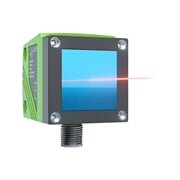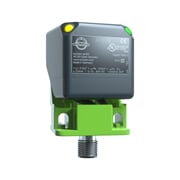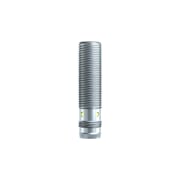Normally open, normally closed or antivalent
Which output function is required?
Which output function is required? Binary switching sensors – i.e. ones that are in either the 'switched on' or 'switched off' state – have three different output functions: 'normally open', 'normally closed' and 'antivalent'.
Normally open
Normally open (NO) is the most common switching variant. Similarly to a light switch, the contact closes when the sensor detects the measurement object in its detection range. The output is through-connected and referred to as a 'high signal'. Normally open switches are identified using the abbreviation 'NO'. They have the following switching symbol:

If an object is present within the active zone, the output is through-connected.
Normally closed
The normally closed variant interrupts the contact when a measurement object is detected within the detection range. The output is interrupted and referred to as a 'low signal'. Normally closed circuits have the great advantage in sensing technology that broken contacts are reliably detected. This has been recognized as being a decisive factor especially since the introduction of the Machinery Directive in 2012. Normally closed switches are identified using the abbreviation 'NC' (or 'R' in German-language contexts). They have the following switching symbol:

If an object is present within the active zone, the output is blocked.
Antivalent
Sensors that provide both normally closed as well as normally open functionality are referred to as being antivalent. Such devices have two output conductors that can be connected simultaneously.

NC (normally closed)
Normally open and normally closed functions are available at the same time.
If additional sensor data are required, there are many sensors available that provide an analogue output or are compatible with the new IO-Link interface.

Normally closed circuits have the great advantage in sensing technology that broken contacts are reliably detected.
Patrick Targonski, Product Manager at autosen






 Cloud compatible
Cloud compatible



